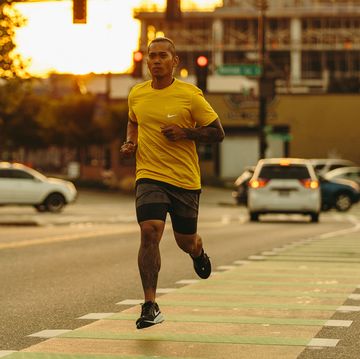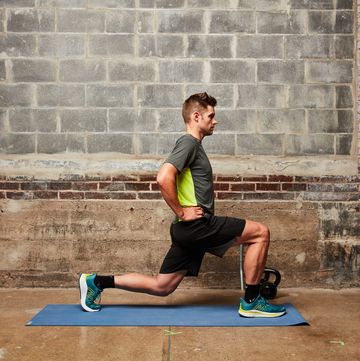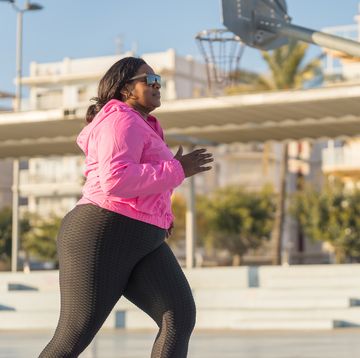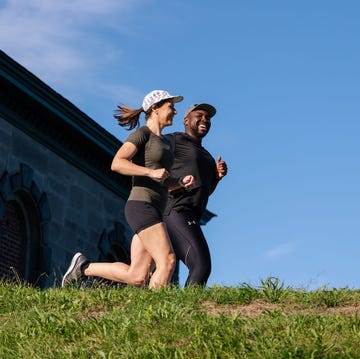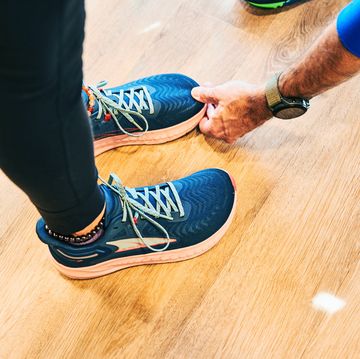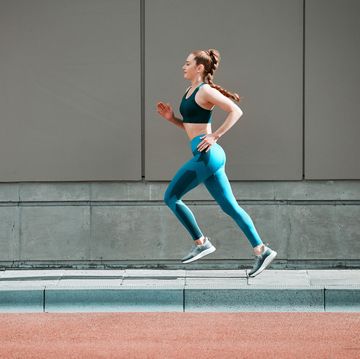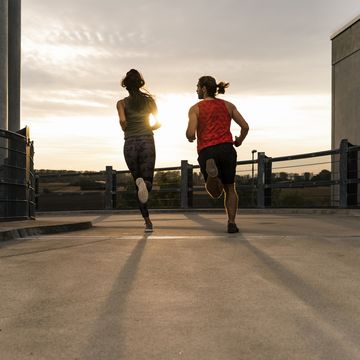Sure, it’s easy to get hurt when you’re just starting out. There are countless aches, pains, and ouches that you’re bound to feel when you’re pushing your body farther and faster than it’s gone before. But here’s the good news: There’s a lot that you can do to prevent the most common running injuries.
Be sure to get good shoes, follow a training plan that gives you a chance to recover from your hard efforts and keeps you from doing too much too soon, and integrate a strength-training program into training.
Strengthening your feet and legs can increase the strength and control of the smaller muscles in your feet and the larger muscles that control movement at the pelvis, hips, and knees. This strength-training routine was designed by Heather K. Vincent, Ph.D., director of the Human Performance Laboratory and Sports Performance Center at the University of Florida. Do this routine three or four times per week. After you’ve been at it for about two months, you can ratchet it back to three times per week.
Unless otherwise noted, for each of these exercises, start by doing as many repetitions as you can on each side while maintaining proper form. Start with one set of 20 reps, and build up to three sets of 20 reps, resting for 45 to 90 seconds in between sets. Then increase the resistance so the effort feels harder, and you can get keep getting stronger. Maintaining proper form is the most important thing. So when your form starts to suffer, that’s a sign that you’re tiring and have done your final rep. “Doing these exercises with improper form puts you at risk of injury,” says Vincent. Not to mention, it’s a waste of time!
Get all the tools, tips, and inspiration you need to get started with the Runner’s World Big Book of Running for Beginners, which will hit store shelves on March 28.
LEG STRENGTH
These exercises will help build strength in your hips, legs, and feet. To perform many of these, you’ll need a rubber resistance band. These can be found in most sporting-goods stores or online. Strip bands are the least expensive, and these rubber strips can be cut to different sizes. Tube bands come with handles and can be held during exercise. There are varying levels of strength: light (which provides 3 to 5 pounds of resistance), medium (which provides 8 pounds of resistance), heavy, and extra-heavy. Heavy and extra-heavy bands provide 12 to 20 pounds of resistance and are designed for people who are already trained. To determine whether the band is right for you, test it out in the store. Look for extra features that matter to you, like extra clips, handles, cuffs, or rings. Consider buying two different resistance levels for different exercises.
Seated Hip External Rotator
1. Sit down fleon a bench. Attach a resistance band to the left end of the bench and loop the other end around your right foot.
2. Keeping your knees together, lift your right leg out to the side to a count of two, then release it back down to a count of two. Repeat on the other leg.
Standing Hip Flexor
1. Put your right foot in the resistance band, then stand and turn so you are facing away from the band’s anchor.
2. Keeping your right leg straight, lift it forward to a count of two, then release it back down to a count of two. Repeat on the other leg.
Standing Hip Abductor
1. Attach a resistance band to a stable object.
2. Loop the other end around your right foot so the band crosses in front of you.
3. Standing with your left leg slightly behind you, keep your right leg straight and lift it out to the right side. Lift it to a count of two, then release it back down to a count of two. Repeat on the other leg.
Side-Lying Leg Raise
1. While lying on your side on the floor, raise one leg straight up to about 45 degrees.
2. Do not let your leg move toward the front of your body or go behind your back.
3. Raise the leg 15 times. Repeat on the other leg.
Pelvic Drop Exercise
1. Use a stair, or a step from a step exercise class.
2. Stand sideways on the step on one leg. This is your support leg. Keep that leg straight, and keep your abdominals engaged.
3. Allow your other leg to hang off the edge of the step. Let that leg slowly lower toward the ground by allowing your pelvis to slowly drop down. Do not let that foot touch the ground. Just control the movement with a slow, steady drop. Keep your support leg as straight as possible.
4. When you’ve gone as low as you can without touching the ground, hold this position for two counts, keeping your abs tight.
5. Raise your pelvis up to raise the foot back up. When the pelvis is level and your hips are even, that’s one rep.
6. Do 10 to 15 reps on each side. When it becomes easy, build up to two or three sets of the exercises, or hold a lightweight dumbbell in your hand to increase the resistance.
FOOT STRENGTH
Any time you’re sitting down you can work on strengthening your feet. This will help you as you’re starting to run or transitioning to any new kind of training program. You can do these exercises while you’re watching television, sitting at your desk, or taking a break. Perform 15 reps of each exercise. Do each of these exercises three or four times per week. Choose four from the group, and rotate different exercises each day.
Heel Raise
1. With your feet on the floor lift your heels up while keeping the balls of your feet on the ground.
2. Lower your heels.
3. Repeat.
Toe Grip
1. With your feet flat on the floor, move your toes as if you are raking them backward and curling up the arches of your feet.
2. Flatten your foot again.
3. Repeat.
Dorsiflexion and Plantar Flexion
1. With your legs stretched straight out in front of you, push down your toes like you are pointing them (plantar flexion).
2. Then bring your toes back. (This is dorsiflexion)
3. Repeat.
Toe Spread
1. With your feet flat on the floor, envision spreading your toes like you would spread the fingers of your hand.
2. Relax your toes.
3. Repeat. This is tricky and takes some practice.
Toe Tap
1. With your feet flat on the floor, tap each of your toes up and down on the ground in sequence like you would tap your fingers on a table.
2. Repeat.
Exaggerated Inversion and Eversion
1. Starting with your feet flat on the floor, drop your arch in and lift the sides of your feet outward.
2. Hold for two counts, then lift your arch while you push the outside of your feet firmly down on the ground.
3. Hold for two counts.
4. Repeat.
Grabbing and Passing a Towel
1. Place a small hand towel on the floor.
2. Alternate which foot will pick up the towel using your toes.
3. Pass the towel from the toe grip of one foot to the other foot and hold in place for two counts to strengthen the grip.
Check out our beginners’ section, The Starting Line here.


